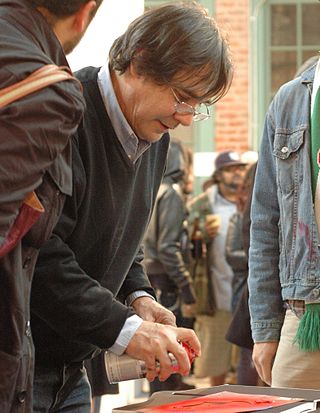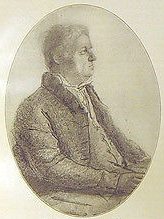
Salem is a historic coastal city in Essex County, Massachusetts, United States, located on the North Shore of Greater Boston. Continuous settlement by Europeans began in 1626 with English colonists. Salem was one of the most significant seaports trading commodities in early American history. Prior to the dissolution of county governments in Massachusetts in 1999, it served as one of two county seats for Essex County, alongside Lawrence.

The Peabody Essex Museum (PEM) in Salem, Massachusetts, US, is a successor to the East India Marine Society, established in 1799. It combines the collections of the former Peabody Museum of Salem and the Essex Institute. PEM is one of the oldest continuously operating museums in the United States and holds one of the major collections of Asian art in the United States. Its total holdings include about 1.3 million pieces, as well as twenty-two historic buildings.
Montserrat College of Art is a private, non-profit art college located in Beverly within Essex County of Massachusetts. The school is accredited by both the New England Commission of Higher Education and the National Association of Schools of Art and Design.

Frank Weston Benson, frequently referred to as Frank W. Benson, was an American artist from Salem, Massachusetts known for his Realistic portraits, American Impressionist paintings, watercolors and etchings. He began his career painting portraits of distinguished families and murals for the Library of Congress. Some of his best known paintings depict his daughters outdoors at Benson's summer home, Wooster Farm, on the island of North Haven, Maine. He also produced numerous oil, wash and watercolor paintings and etchings of wildfowl and landscapes.

OSGEMEOS are identical twin street artists Otavio Pandolfo and Gustavo Pandolfo. They started painting graffiti in 1987 and their work appears on streets and in galleries across the world.

Benjamin Pickman Jr. was a U.S. Representative from Massachusetts.

John Fekner is an American artist known for his spray painted environmental and conceptual outdoor works.

Blek le Rat is a French graffiti artist. He was one of the first graffiti artists in Paris, and has been described as the "Father of stencil graffiti".

The Essex Institute Historic District is a historic district at 134-132, 128, 126 Essex Street and 13 Washington Square West in Salem, Massachusetts. It consists of a compact group of properties associated with the Essex Institute, founded in 1848 and merged in 1992 into the Peabody Essex Museum. Listed by increasing street number, they are: the Crowninshield-Bentley House, the Gardner-Pingree House, the John Tucker Daland House, and the Phillips Library. The John Ward House, which fronts on Brown Street but shares the 132 Essex Street address, is another National Historic Landmark within the district. The Andrew Safford House at 13 Washington Square West, built in 1819, was said to be the most expensive home in New England at the time.

Ange-Joseph Antoine Roux, "Antoine Roux" (1765–1835) was a French fine art painter who specialised in maritime painting, sometimes referred to as marine art.

The Essex Institute (1848–1992) in Salem, Massachusetts, was "a literary, historical and scientific society." It maintained a museum, library, historic houses; arranged educational programs; and issued numerous scholarly publications. In 1992 the institute merged with the Peabody Museum of Salem to form the Peabody Essex Museum.

Christopher Wool is an American artist. Since the 1980s, Wool's art has incorporated issues surrounding post-conceptual ideas.

The Phillips Library of the Peabody Essex Museum (PEM) is a rare books and special collections library. It is made up of the collections of the former Peabody Museum of Salem and the Essex Institute. Both had libraries named for members of the Phillips family.

Charles Osgood (1809–1890) was an American artist from Salem, Massachusetts, who also worked briefly in Boston and New York City. Examples of his work are in the American Antiquarian Society, Historic New England, Harvard University, Massachusetts Historical Society, and Peabody Essex Museum.

Michele Felice Cornè (1752–1845) was an artist born in Elba who settled in the United States. He lived in Salem and Boston, Massachusetts; and in Newport, Rhode Island. He painted marine scenes, portraits, and interior decorations such as fireboards and murals.

Anila Quayyum Agha is a Pakistani–American cross-disciplinary artist. Agha explores social and gender roles, global politics, cultural multiplicity, and mass media within drawing, painting, and large-scale installations. In 2014, Agha's piece Intersections won the international art competition, Artprize, twice over with the Public Vote Grand Prize and the Juried Grand Prize in a tie with Sonya Clark, the first time in Artprize's history.
Vasundhara (Vas) Prabhu is the Director of Education at the Farnsworth Art Museum located in Rockland, Maine. She has over 42 years of experience in museum education where she has worked to increase diversity within the field and has been nationally recognized for her pioneering work in education programs particularly family guides and in exhibition interpretation and education oriented spaces within the museum viewing experience.
D.Y. Begay is a Navajo textile artist born into the Tóʼtsohnii Clan and born from the Táchiiʼnii Clan.
















